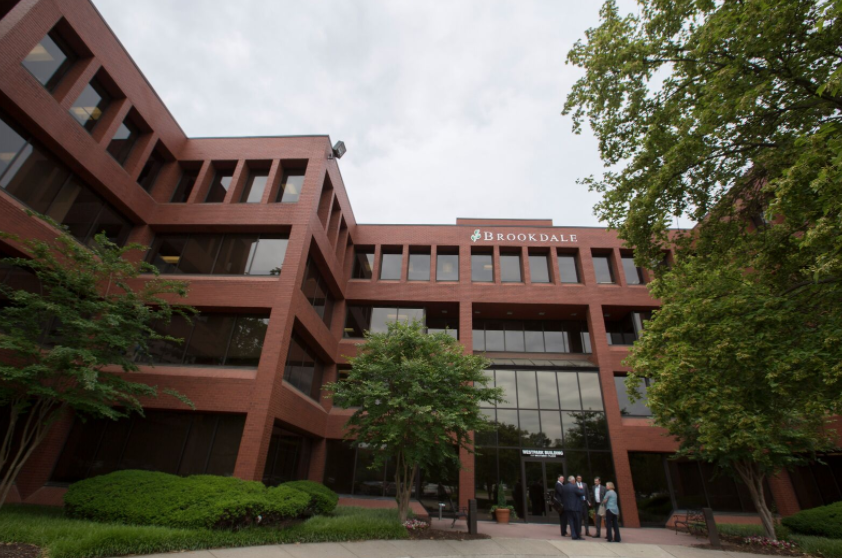The 21st Century Senior Living Community is a series brought to you by CDW, a provider of technology solutions and services focused exclusively on serving the healthcare marketplace. The series takes a clear-eyed look at how leading providers and their partners are creating the next generation of senior living communities by raising the bar on services, design, and technology.
Keeping operational and overhead costs low is at the top of many executives’ priorities, no matter the size of their business.
But with a portfolio of more than 1,000 senior living communities spanning 47 states, facing this task head-on can certainly be quite the undertaking for Brentwood, Tennessee-based Brookdale Senior Living (NYSE: BKD).
In an attempt to do so, however, Brookdale managed to kill several birds with one stone: it improved sustainability company-wide while lowering costs and boosting resident and staff quality of life, through an ambitious technology implementation meant to slash energy usage and costs.
Thousands of sensors
Among the projects Brookdale highlighted in its recently released, second-annual Sustainability Report was the installation of more than 48,000 occupancy sensors across its communities. These sensors automatically turn off a room’s lights once they detect no activity after a set period of time.
“We really focused the efforts on where lights are most often left on 24/7. Sometimes it’s just out of sight, out of mind,” said Marla Thalheimer, director of Sustainability for Brookdale Senior Living.
Ultimately, the company installed occupancy sensors in common rooms, offices and storage areas. In addition to this effort, 73 Brookdale communities also performed LED retrofits of various lighting systems throughout their building.
Though projects like upgrading lighting systems and installing occupancy sensors may be considered “low-hanging fruit,” Thalheimer touts the energy savings these projects have brought to the company.
“They’re fairly inexpensive and they have good energy savings,” she said. “When we were thinking about [projects that] we could do that could get a good return…this was one of the things we found we could do.”
Since implementing these technologies, Brookdale has been able to achieve a 2.42% reduction in energy usage, saving 19.75 million kilowatt hours and yielding an estimated $7.6 million in normalized energy savings, according to its Sustainability Report.
Brookdale has replicated this success with respect to its overall water usage.
Last year, the company retrofitted and installed 4,148 high-efficiency water fixtures—toilets, faucets, aerators and shower heads—that have improved water flow throughout several of its communities. In addition, 30 of Brookdale’s communities have piloted smart irrigation controllers to better understand and monitor water usage.
Since installing these water-saving solutions, the organization saw a 4.25% reduction in water usage across its communities, resulting in 2 million gallons of water being saved, according to Brookdale.
As part of its efforts toward energy reduction, Brookdale has also become an Energy Star partner, utilizing its online tools to benchmark its overall performance. And because of these energy-saving technologies it implemented last year, 21 Brookdale communities have since achieved Energy Star certification.
An ‘aggressive goal’
Though the company has much to celebrate, Thalheimer explained that Brookdale is set on continuing its “aggressive goal” to reduce water and energy usage.
The company is hoping to pilot other technologies that can help them achieve this goal.
“We’re looking at real-time monitoring; there are just a lot of exciting technologies out there around gathering information, metering and monitoring, so we’re trying to see what is the best type of solution,” said Thalheimer.
The implementation of various technologies have certainly helped Brookdale in reducing its energy and water consumption. But on top of this, it has brought benefits to quality of life for residents and staff.
“We obviously strive to reduce our environmental footprint, but the side benefit to all of this is also having better, more efficient, more comfortable facilities for our residents,” she said.
Thalheimer called this mentality the “green building movement,” which shifts the “going green” focus from efficiency and environmentalism to health and wellness. It’s also a way of increasing resident engagement, for instance through the “Turn It Off” challenge, which tasked each Brookdale community to find unique ways they could reduce waste, and energy and water usage.
And all of this might be creating senior living environments that are more appealing to the Baby Boomer clientele that will surge through the 21st century. This cohort is demanding greener retirement living, as The New York Times reported in 2015.
“There are some really exciting things happening out there where it’s moving towards the building actually improving health and wellness of the occupant,” said Thalheimer. “When I think about that, and the ability in the future for us to actually put things in our communities that actually make our residents’ day better [and] makes our associates more comfortable and able to care for our residents better… that’s very exciting to me.”
Written by Carlo Calma



